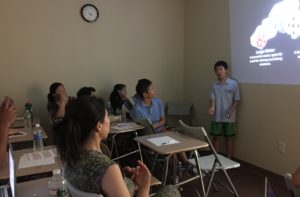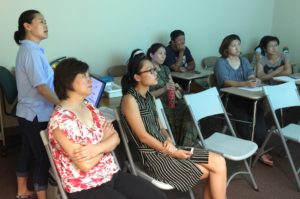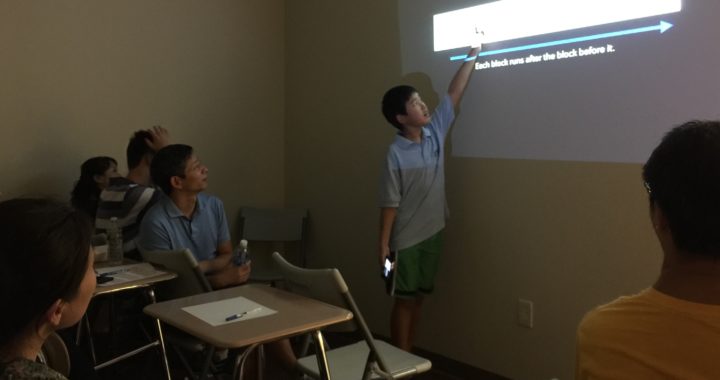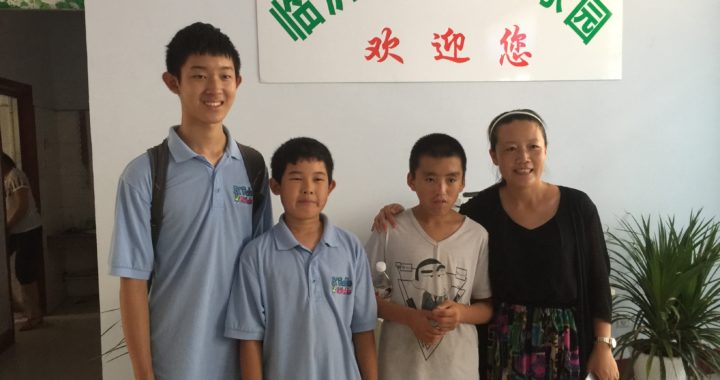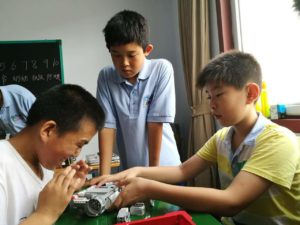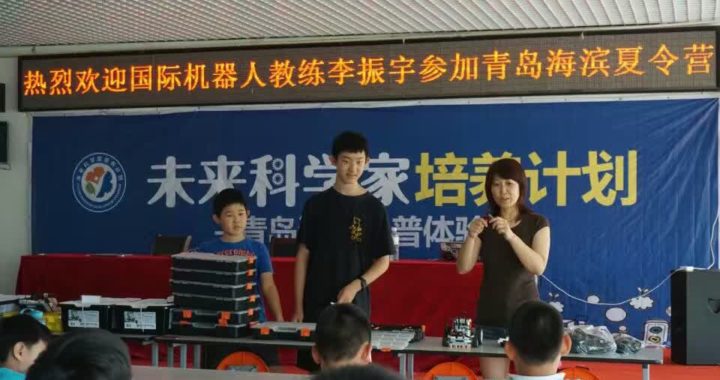In summer 2016, we headed to a Chinese summer camp in Qingdao to teach the kids there about robotics. It was packed with new experiences for everyone involved in it.
Teaching
Day 1 – Building

Eddie was helping kids.
On the first day, we got to know the kids and helped them build the robots. We discussed the basics of LEGO robotics, such as what a robot is and how to build using LEGO Technic. With some translation, they managed to grasp the concepts, and we moved on to building.
We let the student body (about 15 students) split up into groups of 2 and 3. Each group chose one out of three of our robots to build. After doing this, we guided them step-by-step in building their robot until each group was able to show their robots in pride:
Day 2 – Basic Programming
Now that the students had built their robots, it was time to teach them how to program their robots.
We started out by pointing out various parts of the EV3 software. After the students had familiarized themselves with the programming software, we let them play around with the most basic block, Move Steering:
Each group had a blast learning to make their robot move forward, backward, and even turn.
Day 3 – Sensor Programming
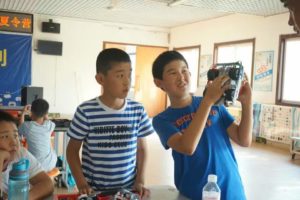
Anthony was showing sensors to the class.
At this point, the students had a solid understanding of motor programming, so we moved on to sensor programming.
We taught them about the control statements of programming, such as switches (if statements), loops, and wait blocks. They learned how to program their robot to stay inside a circle, and watched their robots running their programs with excitement:
Finally, they were ready to prepare for our SumoBots competition. We guided them through making a simple SumoBots program using the color and ultrasonic sensors. They even had time to make their robots their own.
Day 4 – Competition
Finally, after building, programming, and customizing their robots, each st

Kids were competing with each other.
udent was ready for seeing their robots battle against each other in a friendly competition. Everyone watched and rooted for each team, and started cheering whenever a robot pushed another robot out of the SumoBot ring.
In the end, everyone had fun with robotics, having learned to build, program, customize, and battle their robots.
Learning
Yes, we at Kids2Kids also learned quite a bit from the summer camp.
The Language Barrier
Our students were born in China, and have lived there to this day, so most of them spoke in Chinese. This language divide required us to learn how to speak in Chinese. Eventually, we learned enough Chinese to carry moderate conversations, and we’re pretty proud of that.
Tofu, Bread, and Clay
We also took part in the summer camp’s activities, such as watching movies, going to museums, and learning how to make various Chinese things. For example, we learned how Qingdao started out as an ancient, peaceful city, as well as its history under German occupation. We also learned how to make tofu (note to anyone making tofu: it requires a lot of soybeans) and soymilk (a byproduct of making tofu), as well as a kind of Chinese bread (it’s white and it’s pretty tasty) and clay pottery (my pot broke in half in the middle of the session.) We even slept and ate at the summer camp, making friends with the kids there and learning more about Chinese culture.
